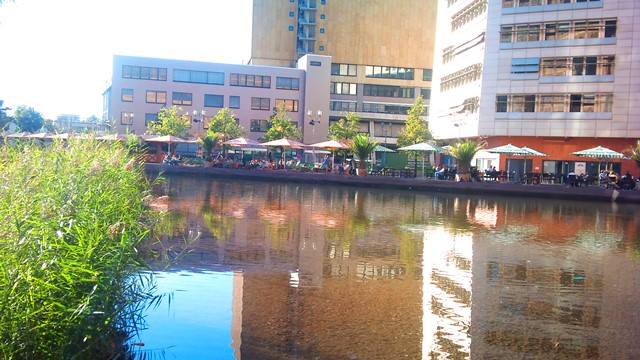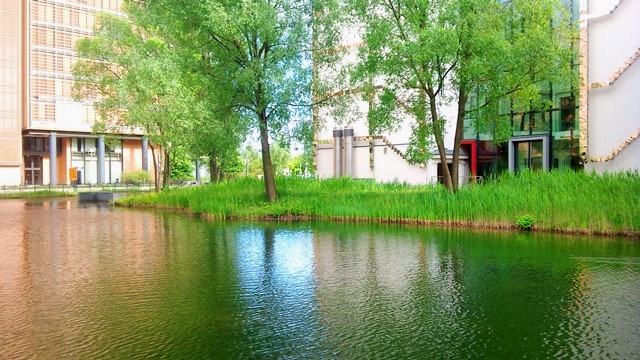
 |
|
Potsdamer Platz, Berlin |
 |
This urban waterscape has contributed to making Potsdamer Platz one of the most visited places in Berlin. The idea behind this important urban waterscape is that the rainwater should be used where it falls. At Potsdamer Platz, a combination of green and non-green roofs harvest the annual rainfall. Rainwater then flows through the site’s buildings and is used for toilet flushing, irrigation, and fire systems. Excess water flows into the pools and canals of the outdoor waterscape creating an oasis for urban life. Vegetated biotopes are integrated into the overland landscape and serve to filter and circulate the water that runs along streets and walkways, all without the use of chemicals. The lake’s water quality is excellent forming a natural habitat and fresh water usage in the buildings has been reduced. Potsdamer Platz stands as a successful example of a revitalized open space where city life, prestigious architecture, and the beauty of water are in harmony. |
Start of Project: 1994 / End of Prject: 1998 WaterThe following measures are implemented for the management of 23.000 m³ rainwater of 19 buildings per year: Advanced technology controls the constant quality of the water. The cleaning and filtering of the water is achieved naturally through the cleaning biotopes, a modified constructed wetland which is planted mainly with Phragmites. The water circulates continuously with a maximum filtering capacity of 30 m³/h to 150 m³/h for the different parts of the lake. The system is not connected to the rainwater sewer. |
|
Project benefitsReduction of flood risk and polluted surface waters, closing the water cycle by evaporation due to green roofs and the urban lake, improving the local microclimate. Utilization of rainwater, no rainwater disposual into sewers to avoid the overload of the mixed sewerage system. Rainwater is mainly redirected into the atmosphere by evaporation, therefore closing the small water cycle and improving the local micro climate.
|
 |
|
|
LiteraturDezentrale Regenwasserbewirtschaftung - Potsdamer Platz, SEB Asset Management Kombination von Regenwasserbewirtschaftungsmaßnahmen: Ergebnisse der Voruntersuchungen für das Projekt Potsdamer Platz. |
|
Andere Projekte: |
|